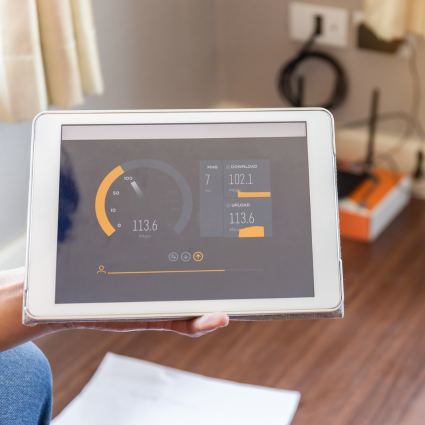Let DEM Monitor
In the first year of COVID we saw lots of discussion about permanent remote work. Even for the positions in which this is possible there will still be companies that decide to maintain a strong office presence. However, the forces of the labor market and the recent lifestyle changes are pushing towards more flexibility for the employees to choose what location to work from. In my opinion, the future of work location points towards the direction of a hybrid model (for the job types that this is possible)
The impact of these changes is going to permanently affect the way IT supports their users moving forward. Let’s break it down.
Pre COVID Digital Experience Monitoring
WiFi
When designed and implemented right, on-campus WiFi is very reliable but also very observable and controllable. Most WiFi vendors offer very good monitoring tools that can give a clear perspective of the status of the network from the controller’s point of view, but also detect and provide data to troubleshoot issues, when inevitable something comes up.
A much higher monitoring fidelity can be achieved by deploying WiFi sensors around the campus that capture the user experience from the same exact location the users are (boardroom, auditoriums, cafeterias, etc).
WAN
The other good thing about being on campus is that you can plug in your device and take the WiFi out of the equation. Of course, the backbone still needs to be monitored with Netflow, SNMP, and also WAN sensors for true end-to-end user experience data capture and analytics.
Cloud/SaaS
When it comes to accessing cloud and SaaS applications and services, corporate offices can choose to invest in big and dedicated pipes with direct connectivity to major providers and backbone networks. In addition, using multiple ISPs with failover reduces outages but also provides accountability when SLAs are in place.
It’s inevitable that things will go wrong, either for individual users or parts of the network. But then again, when you are on campus and you can walk at the crime scene with your laptop to do a packet capture, or talk to users, you don’t have to jump through hoops for troubleshooting and remediation.
Post COVID Digital Experience Monitoring
WiFi/LAN
In this case, both WiFi and LAN collapse into the same consumer grade router. The WiFi is often the weak link especially in dense city environments. On top of all these, it’s not possible to monitor the WiFi spectrum or make changes and reconfigure any router settings (channel, channel width, protocol, security, etc).
Cloud/SaaS
Accessing cloud or SaaS applications is done through the same pipes with all other Internet traffic.The ISPs are essentially black boxes and also have very low accountability in terms of the services or the hardware they provide to their customers. For example, reliable video conferencing is an essential service that I use on a daily basis, and for some people, it’s all they do all day, every day.
In this context, the end-user does their own monitoring by reporting incidents to IT. And they also do their own troubleshooting, often under the guidance of their IT support team either via email or over the phone.
This has created a gap in the monitoring space, and it can be closed by extending monitoring to the user’s home network and devices. This is done by installing an agent on the user’s device that can capture a wealth of information regarding WiFi signal strength, end-to-end bandwidth performance, VoIP metrics, CPU/Memory/Disk statistics, etc.
Hybrid
Moving into a hybrid model, it means that IT needs to be able to cover both on and off campus Digital Experience Monitoring. A user might be connected on their home router and using a VPN one day, and the next be on campus where all these are out of the equation. In this type of scenario, monitoring needs to be seamless, flexible, and multi environment.
In that context, NetBeez offers a complete solution that covers all aspects of DEM. Hardware WiFi and WAN, but also virtual and cloud agents can be used to monitor end-to-end user experience on WiFi and WAN networks.
The Windows and MacOS WFH agents are installed directly on user laptops to collect and report experience data directly from the user’s perspective. These approaches complement each other offering a complete view of the user experience when being on campus as well as anywhere else in the world.





